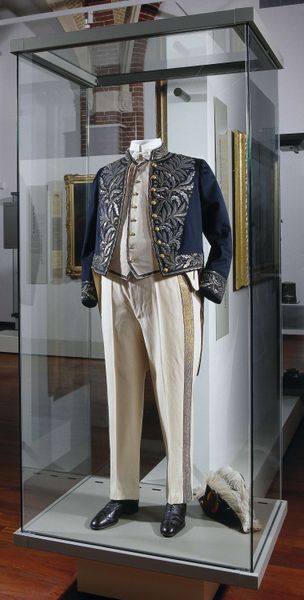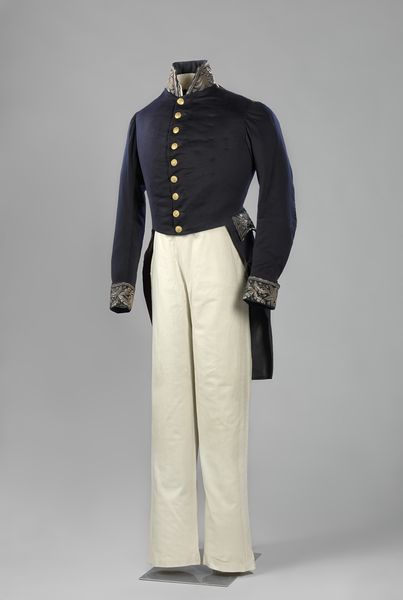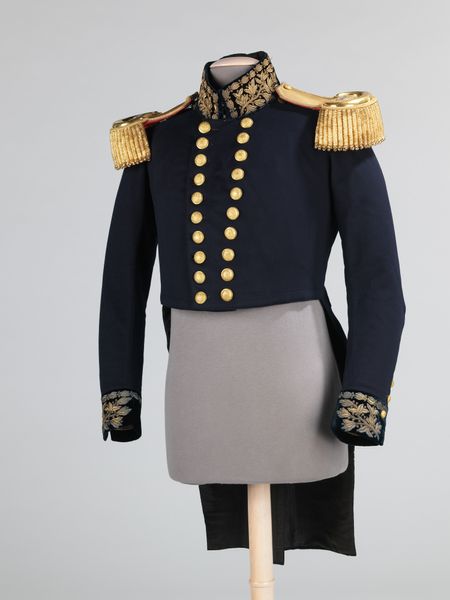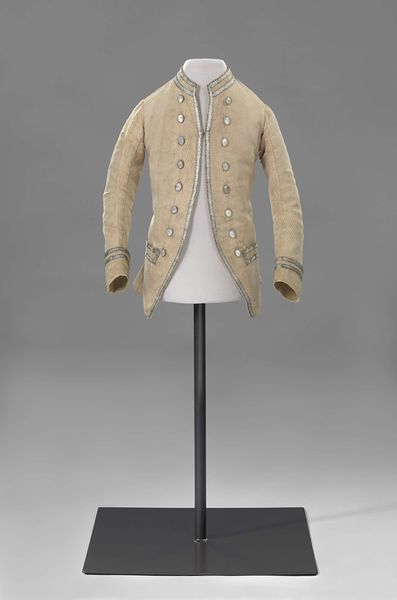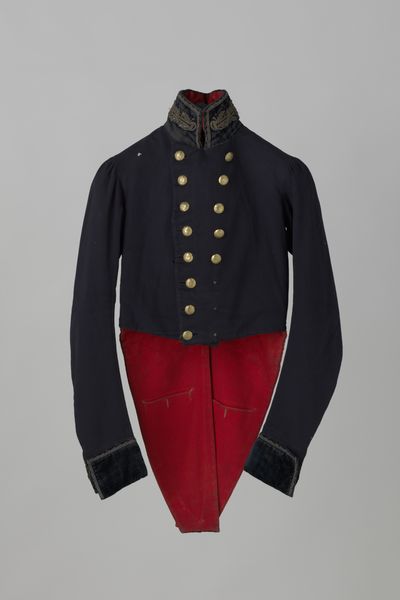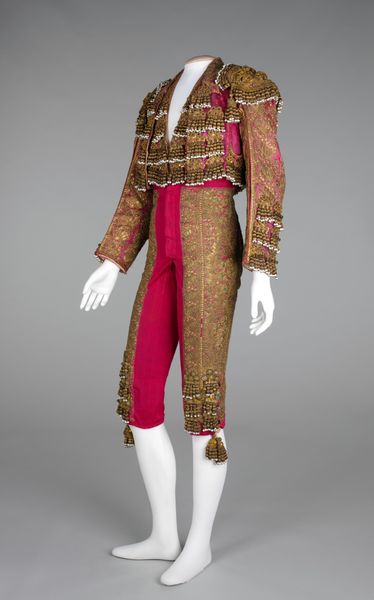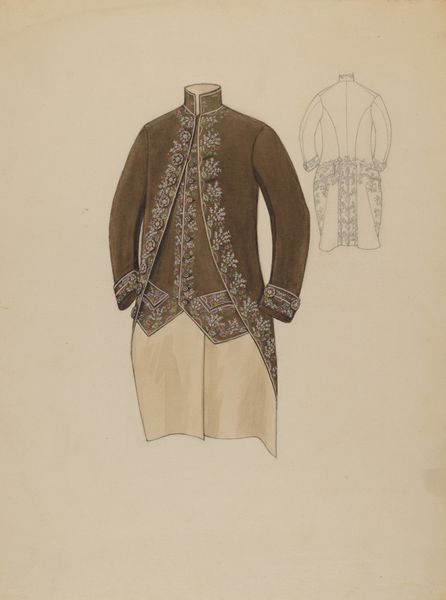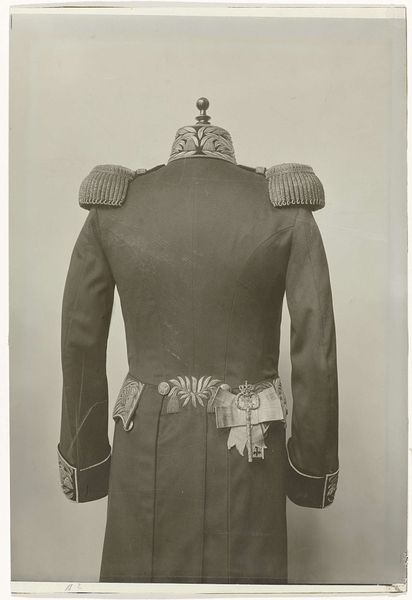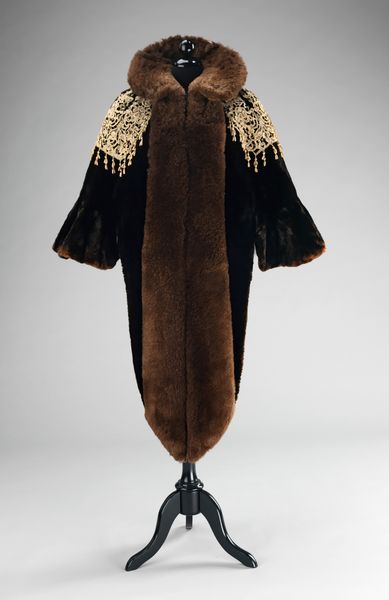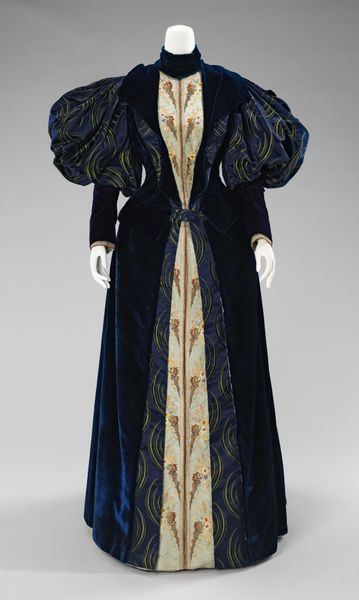
textile
#
textile
#
historical fashion
#
classicism
Copyright: Rijks Museum: Open Domain
Editor: Here we have the "Ambtskostuum van Hendrikus Colijn," likely from the late 1920s, made by C. Meuven & Zoon. It’s Hendrikus Colijn's official suit, predominantly textile. Seeing it displayed like this, I'm really struck by the overt display of status and wealth—the fabric, the trim, everything speaks to a particular position in society. What jumps out at you about this object? Curator: It's fascinating to consider this garment not just as clothing, but as a product of very specific material processes and social relations. Think about the textile production, the labour involved in creating the fabric, the stitching, the embellishments. Where were these materials sourced? Who were the workers crafting this suit, and what were their conditions? Editor: That's an interesting perspective; I hadn’t considered the manufacturing. Curator: Exactly! It also makes one think about consumption. Colijn, as a figure of authority, is consuming a garment that embodies a certain ideology. This wasn’t merely about keeping warm; it was about performing power. We should look at fashion as an integral piece of this puzzle, examining not only class but also cultural production. How do the design and materials reflect broader societal values of that period? Editor: It looks pretty 'classicist', which seems popular at the time. It's really changed my perception to consider clothing as a product of labor, instead of just a piece of fashion or historical item. Curator: Indeed, it's a manufactured object, reflecting labor, trade, and cultural values of that era. That way, even what appears merely "classicist" has to be reassessed under social production and historical pressure. Editor: Thinking about where materials came from and how it all impacted social relations is eye opening. Thanks for sharing your perspective!
Comments
No comments
Be the first to comment and join the conversation on the ultimate creative platform.
